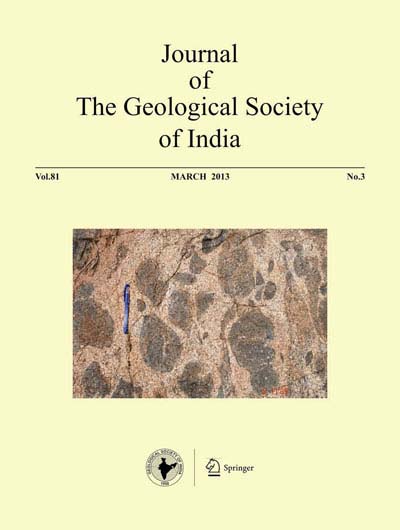Unlocking Possibility of Blasting near Residential Structure Using Electronic Detonators
Keywords:
Blasting Technology, Innovative Blasting, Dgital Blasting System, Modelling.Abstract
Ever since development of human civilization, mining and agriculture has been the backbone of growth. Today the most developed countries of the world are the ones focused on core economical development, be it power generation, steel making, oil and gas production, or agriculture. Mining has been gaining importance over the years both from the economic perspective and as an area of sustained research. With the advent of globalization, things have changed very fast and today it is an industry that is driving the economies of several nations. Global competition has propelled countries to reach higher production levels through better techniques of drilling and blasting, excavation and mineral processing. We now have bigger and faster drill machines and excavators. In Explosives technology too significant progress has been made towards having safer explosives and accurate initiating systems that have increased overall control over blasting in terms of vibration, fragmentation, throw, fly rock and overall blast economics.Explosives and Rock Blasting Technology has advanced so much in the last few decades that blasting can now be precisely performed, controlled and predicted. Development of new tools like electronic blasting systems and advanced simulation software has made it possible to customize blasting results as per requirement. These developments have helped mining engineer worldwide in reaping huge productivity benefits besides making it possible to meet the environmental norms even in most demanding conditions.
Inability to blast large size shots on account of proximity of mines to human habitation have always constrained mine management in fully leveraging the strength of large size production equipments. Mine managers have been forced to conduct small blasts on increased frequency to provide feed to large capacity shovels while compromising on Shovel productivity on account of undesirable movement of shovels during blasting. This paper deals with a case study at SEB quarry of Tata Steel wherein it was difficult to fire a big blast due to existing nearby structures. A critical scientific study was conducted before successfully firing of one of the biggest shot of 83 tonnes in the history of quarry. The paper discusses the issues being faced, alternate solutions opted and the final outcome.
Downloads
Issue
Section
Downloads
Published
How to Cite
References
ATLAS POWDER COMPANY (1987) Explosives and Rock Blasting, Atlas Powder Company, Washington, USA, 662p.
BELLAIRS, P. (1987) The application of geological and downhole geophysical data to blast pattern design. Proc. 2nd Int. Symp. Rock Fragmentation by Blasting, Keystone, Colorado, USA, pp.398-411.
BELLAND, J.M. (1966) Structure as a control in rock fragmentation - Coral Lake Iron Ore Mine. CIM Bull., v.59, pp323-328.
BIRCH, W. J. and CHAFFER, R. (1983) Prediction of ground vibration from blasting on opencast sites, Trans. Inst. Min. Metall., Section A: Mining Industry, v.92, pp.A102-A107.
BHANDARI, S., BUDAVARI, S. and VUTUKURI, V.S. (1975) A laboratory study of the effect of burden spacing parameters on rock fragmentation in blasting. Aust. Inst. Min. Met., pp.561-570.
BROADBENT, C.D. (1974) Predictable blasting with in-situ seismic surveys: Mining Engg., v.26, pp.37-41.
DOJCAR, O. (1991) Investigations of blasting parameters to optimised fragmentation: Jrans. Inst. Min and Metall. Section A. Mining Industry, v.100, pp.A31-A41.
DUVALL, W.I. and ATCHINSON, T.C. (1957) Rock Breakage by Explosives: US Bureau of Mines, RI. 5336.
FAVREAU, R.F. (1983) Rock displacement velocity during a bench blast: Prof. 1st Internat. Symp. Rock Fragmentation by Blasting, Lulea, pp.735-776.
FOURNEY, W.L. (1993) Mechanisms of rock fragmentation by blasting. In: J.A. Hudson (Ed.), Comprehensive Rock Engineering. Pergamon Press, pp.39-69.
JKMRC (1979) Optimisation of Rock Fragmentation: JKMRC Report to the Australian Mineral Industries Research Association, October - December, AMIRA Project P93A (1978-1981). Brisbane.
HINZEN, K.G. (1988) Modelling of blast vibrations: Int. Jour. Rock Mech. Min. Sci. and Geomech. Abstr., 25, pp439-445.
KLEINE, T.H., COCKER, A. and KAVETSKY, A. (1990) The development and implementation of a three dimensional model of blast fragmentation and damage: Proc. 3rd Internat. Symp. Rock Fragmentation by Blasting, AusIMM, Brisbane, 181- 187.
KOU, S.Q. and RUSTAN, P.A. (1992) SAROBLAST - A Computer Program for Blast Design, Prediction of Fragment Size and Muckpile Profile: Research Report, TULEA, 1992: Lulea University of Technology, 29.
LUNDBORG, N., PERSSON, A., LADEGAARD-PEDERSEN, A. and HOLMBERG, R. (1975) Keeping the lid on flyrock in open-pit blasting. Engg. Mining Jour., pp.95-100.
MISHRA, A.K. and GUPTA, R.N. (2002) Design of Blast Using High Resolution Camera: Proceedings of Seventh International Symposium on Rock Fragmentation by Blasting, Beijing, China, 11-15, Aug., 2002, Metallurgical Industry Press, pp.378-389.
MISHRA, A.K. (2009) Innovative Changes in Mining Using Digital Blasting Technology, Jour. Mines, Metals & Fuels, v.57, Nos. 3&4, pp.102-108.
OUCHTERLONY, FINN (2005) The Swebrec© function: linking fragmentation by blasting and crushing, Mining Technology, v.114(1), pp.29-44.
PERSSON, P.A., HOLMBERG, R. and LEE, J. (1994) Rock Blasting and Explosives Engineering; 540, CRC Press, USA - ISBN 0-8493-8978-X.
SISKIND, D.E. (1991) Vibration criteria for surface mines blasting ten years after Bureau of Mines RI 8507: Proc. of 17th Conf. on Explosives and Blasting Technique, V.II, Las Vegas, Nevada, USA, pp.1-12.
SISKIND, D.E., STAGG, M.S., KO, J.W. and DOWDING, C.H. (1980b) Structure Response Produced by Ground Vibration from Surface Mine Blasting: US Bureau of Mines, RI 8507. 74

 Arvind K. Mishra
Arvind K. Mishra


